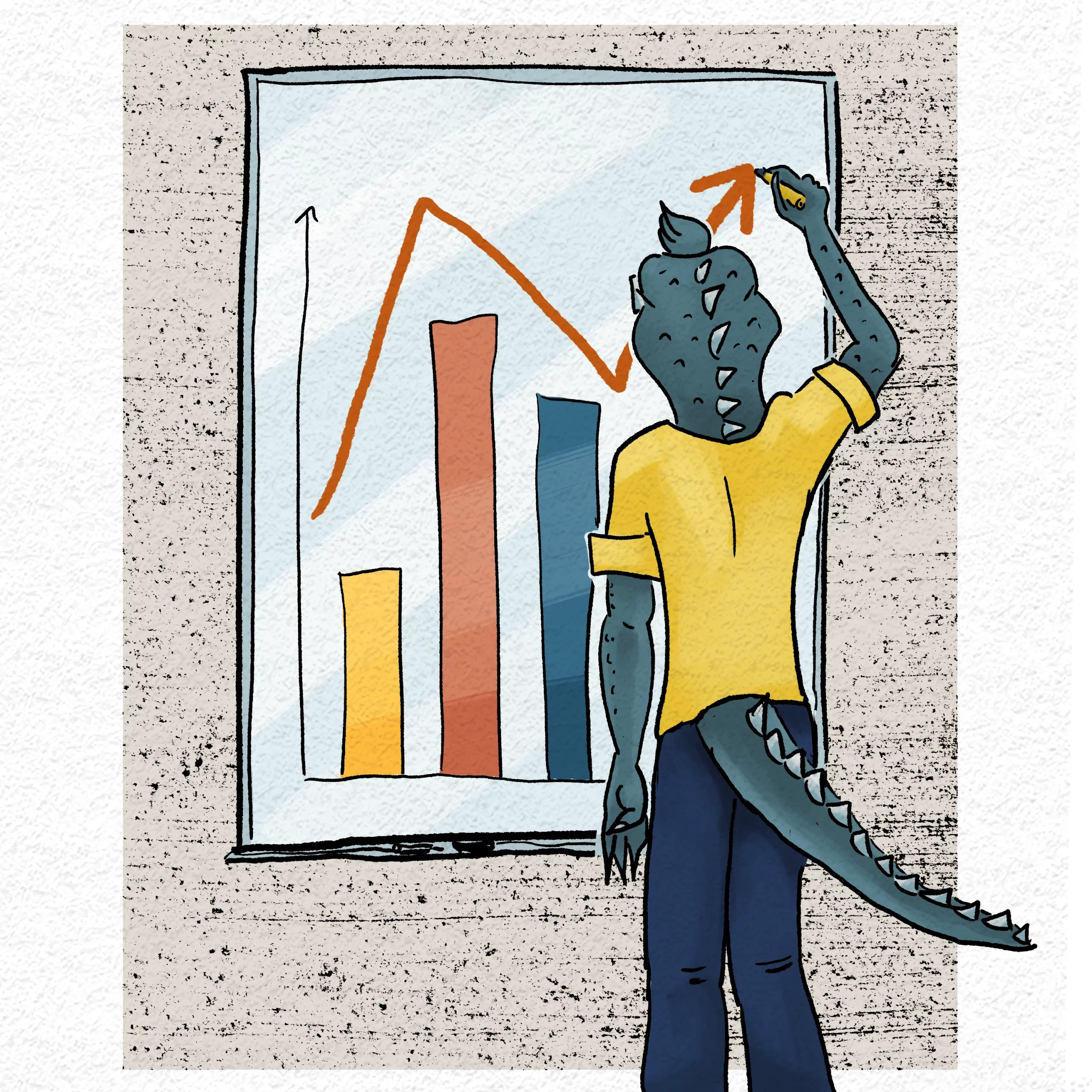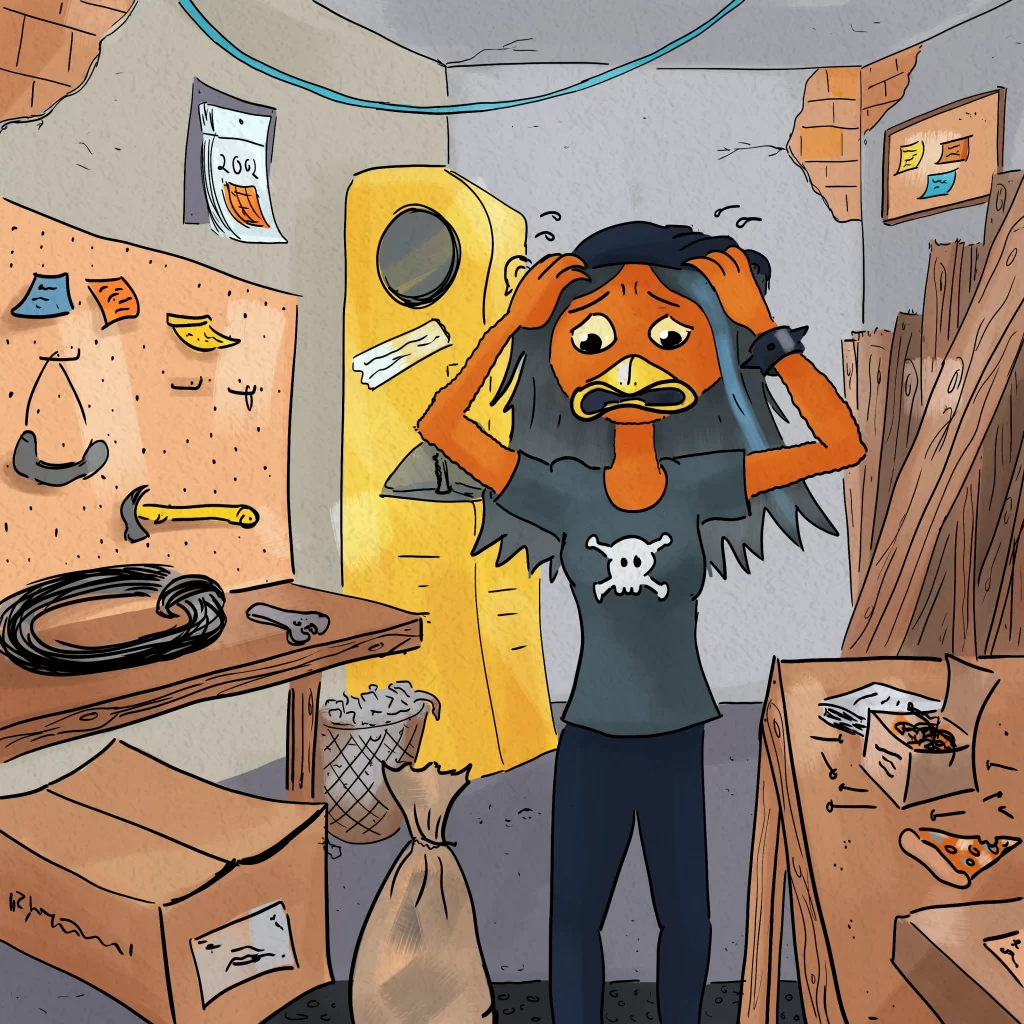
Don’t be like Rhonda.
If you’re a regular here at Zattatat, you know that Rhonda is a retired nurse who now runs a small business making and selling wooden items.

In general, things were going really well – Rhonda enjoyed being free from all the bureaucracy of her hospital job, and she enjoyed the creativity of making fun products as well as the challenge of running a small business….
But recently, Rhonda had been getting stressed out and having trouble getting everything done! And when she thought about it, she realized that the reason was…lack of organization. Specifically, the organization of the physical space in her workshop.
Luckily, Rhonda had a good friend named Process Cat who could help. And when she told him about her problem, he suggested…
The 5S Methodology for Organization!
5S Methodology is a Japanese system for organizing workspaces to maximize productivity and efficiency. Because, believe it or not, the physical organization of a workspace has a huge impact on the productivity of a manufacturing line.
The 5 S’s are Japanese words that start with an “S” sound, but the system has been translated to English in such a way that words describing the same concepts also start with an “S” in English. (Translators are so clever!)
Anyway, the first “S” is…
Seiri (sort)
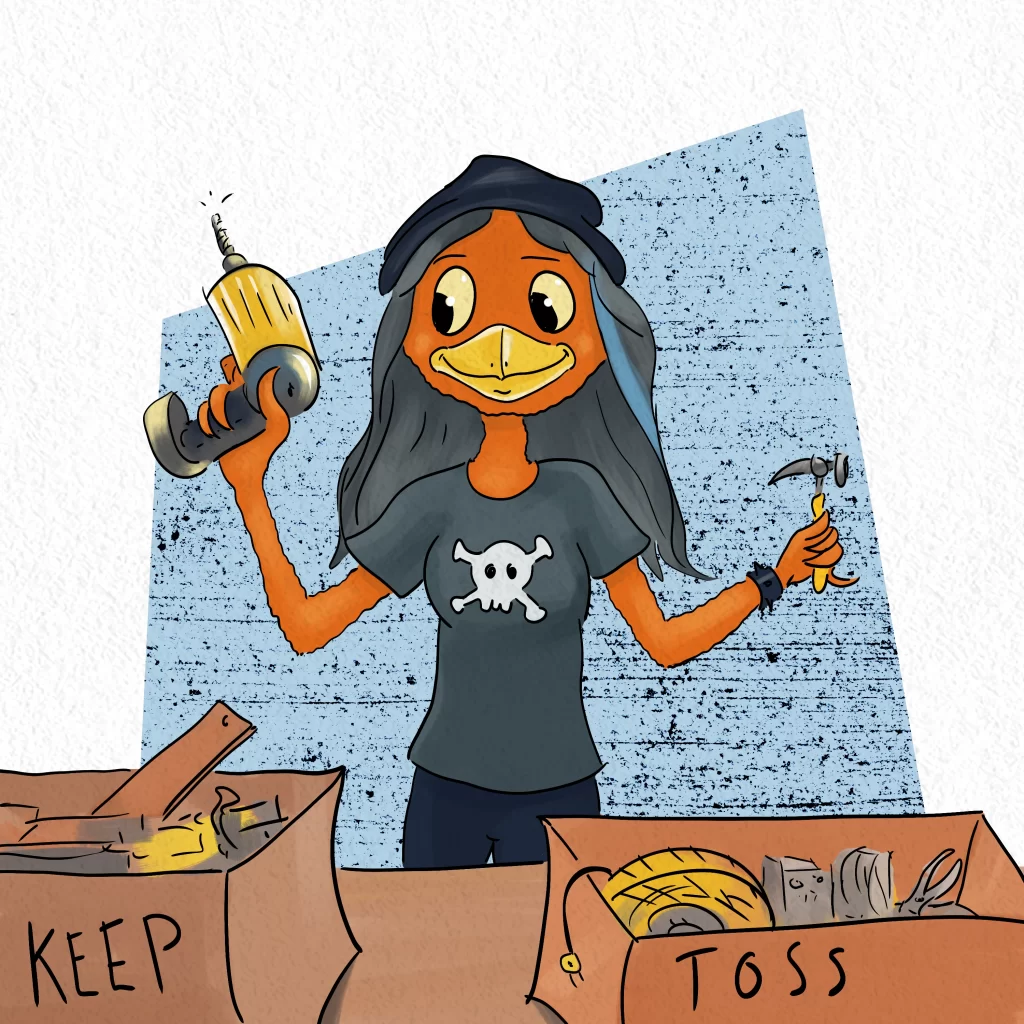
This is about the same thing you probably do when you decide to clean out a room in your own condo (or apartment or house or wherever you live) and if you’re a fan of Marie Kondo and her tidying up method for decluttering living spaces, you’ll probably see some resemblance to her concept of keeping only items that “spark joy.”
In a manufacturing setting, a better metric is probably “Do we actually use it?”
But the point remains: go through all of your tools. Keep those that you actually use and get rid of those that you don’t.
The main benefits of this are that by reducing clutter, you’ll reduce time spent looking for the needed tool; make the best use of your available space; and remove unnecessary safety hazards from the workspace.
There might be some items that you’re not sure about, and for those, experts recommend the “red tag method”: put a special tag on the item in question (the tag can actually be red but could just as well be blue or yellow or green :p ) and place the item in a designated area. If no one needs the item within a cetrain time frame (which will depend on the particular type of product you’re making), it gets tossed.
Seiton (straighten)
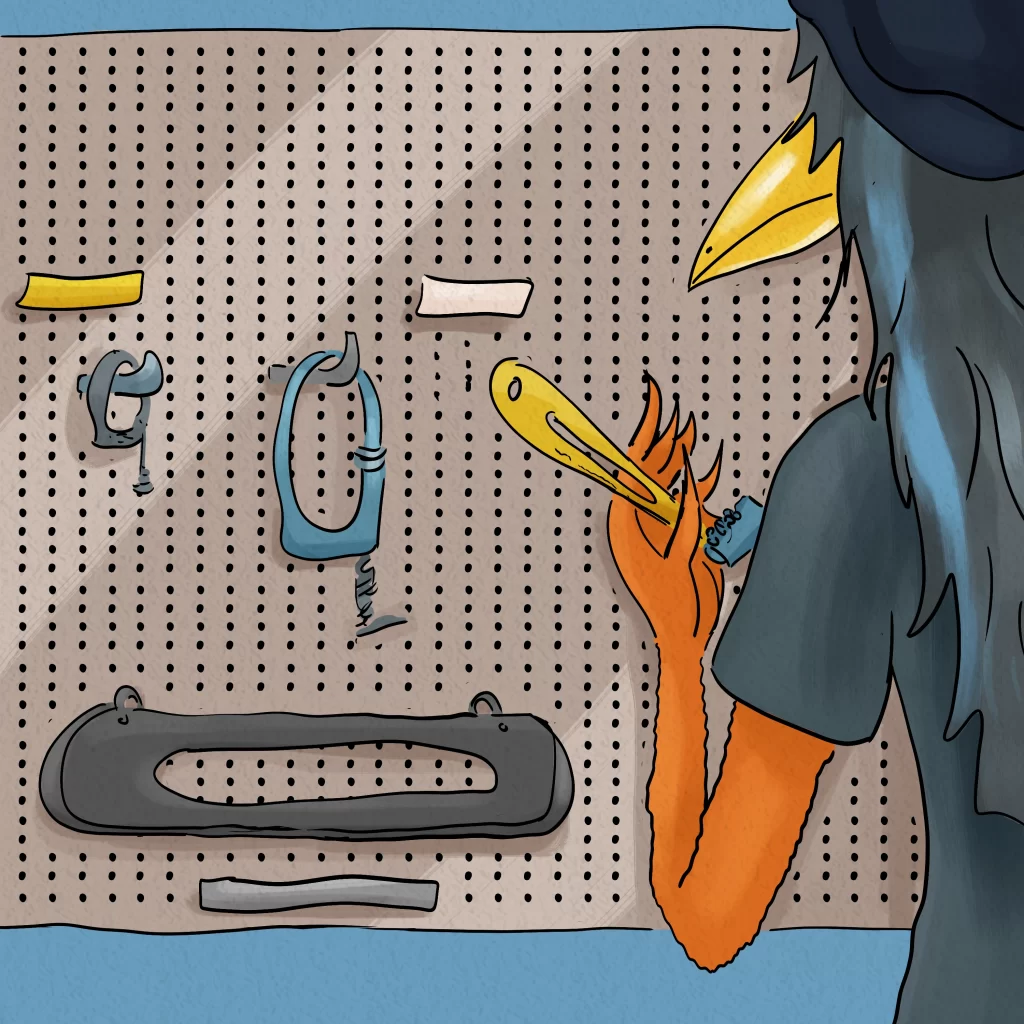
Sometimes translated as “Set in Order,” this one basically means that once you’ve identified those tools and materials that are actually needed for your process, you should arrange them in such a way that everything will be easily accessible to the operator as they’re working.
If you, like Rhonda’s friend Gary, enjoy cooking or baking, you may be familiar with the related concept of “mis en place.”
Anyway, the benefits of seiton are making the workflow smooth and efficient. There’s no benefit to you as a business owner in paying your employees by the hour to rummage around looking for the tools or materials they need to do their job!
Seiso (shine)
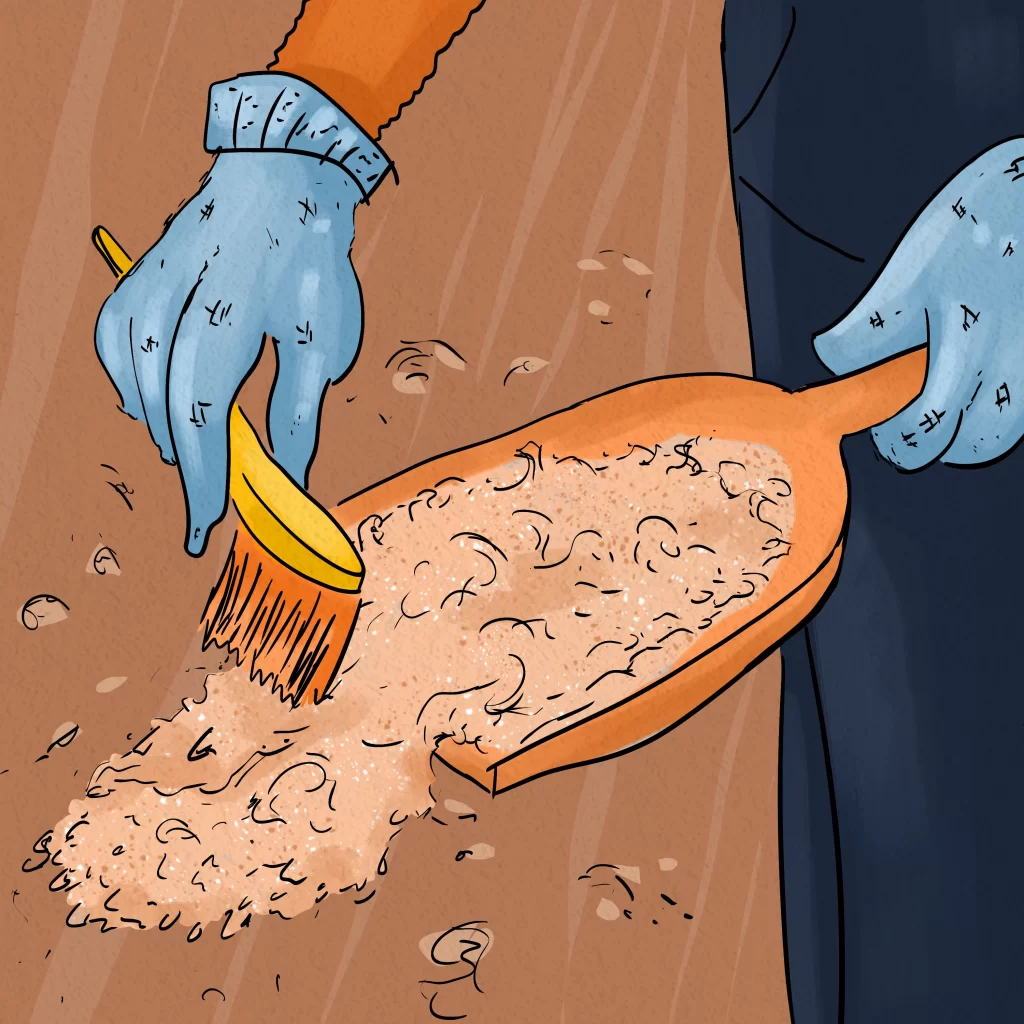
The idea of “seiso” is to keep the workspace clean, but the concept also extends to equipment maintenance and generally just keeping the space and equipment in a “ready to go” state. Specifically, the 5S Methodology encourages planning ahead and scheduling time for cleaning and maintenance activities even though they may not be tasks that immediately bring in revenue, because in the long run your business will be more efficient and profitable if you keep things clean and equipment running.
Once these first 3 steps of 5S are implemented, it could be tempting to think that you’re done… but there are 2 remaining steps that YOU IGNORE AT YOUR PERIL!!!!!
…
Ok sorry, that was a little dramatic. But there are 2 more parts to the 5S Methodology.
Seiketsu (standardize)
If you’re familiar with SOPs, you’re familiar with seiketsu. If not? Basically, this step is all about making sure there are well-documented procedures for doing a task, and everyone is doing the task in the same way.
(To break the fourth wall a bit: behind the scenes at Zattatat, Josh Doering does all of the back-end work with uploading and formatting blog articles like the one you’re reading right now. But he ALSO makes sure that all of his processes are well-documented so that if he’s sick, hopefully MG can scramble and to find someone to fill in, and with Josh’s documentation they can still get that article out for all the readers like you who were expecting content 🙂
Anyway, that’s seiketsu. Which brings us to our last step:
Shitsuke (sustain)
For 5S to REALLY work long-term, the final key is to get all members of your organization onboard. Because if all of your team members aren’t aware of or aren’t in favor of 5S, honestly, you might as well have never implemented it at all.
Without institutional buy-in, your attempts to implement 5S will amount to little more than a “spring cleaning” of the shared workspace. (That’s already a positive thing, by the way.) But WITH institutional buy-in, 5S will become embedded in your company’s culture, which is what will empower your organization to really thrive.

Weekly Challenge:
Be honest: is your manufacturing space so organized that it couldn’t possibly benefit from the 5S Methodolgy? If so, good for you… but otherwise, walk through your space and identify which areas could benefit most from 5S Methodology!
